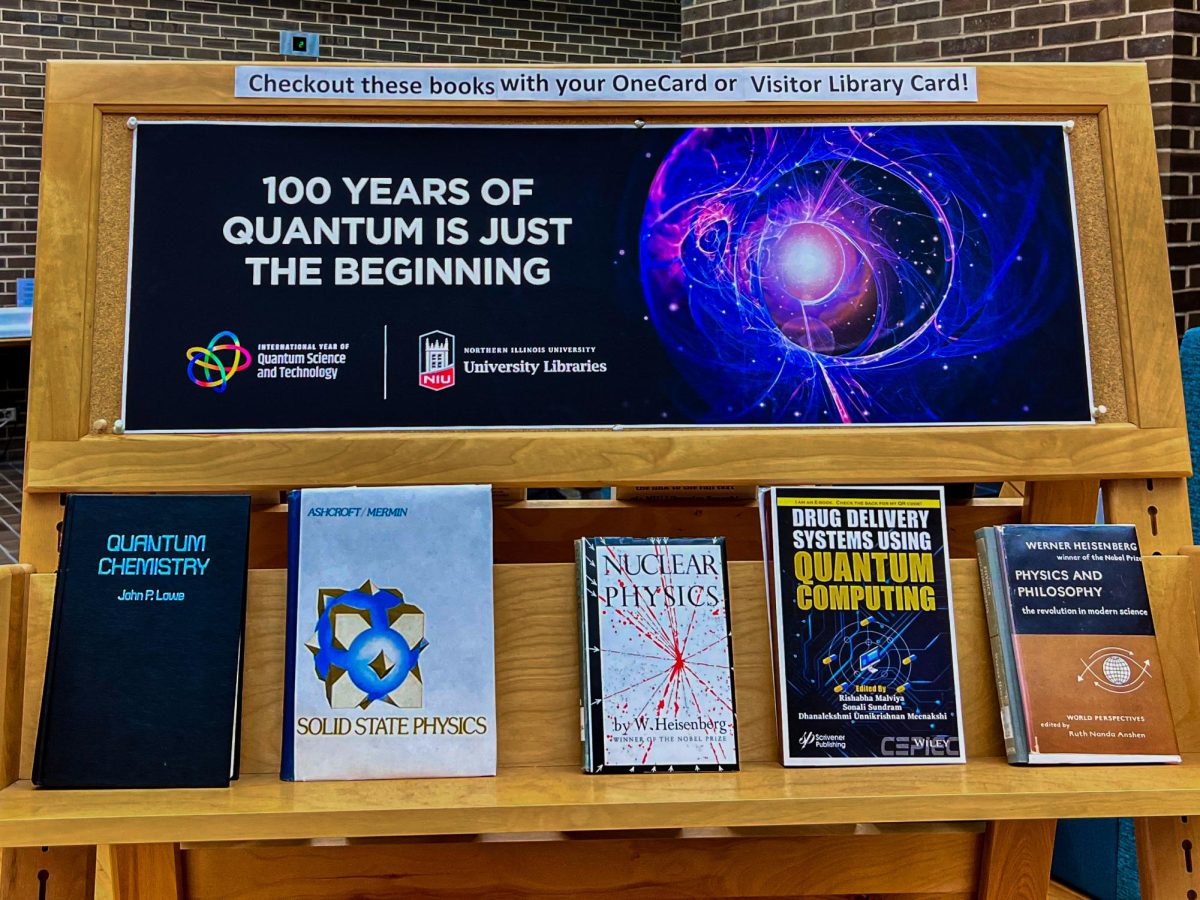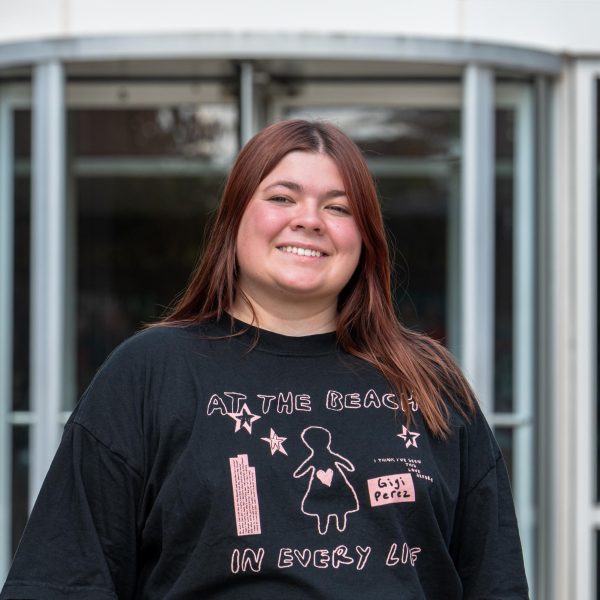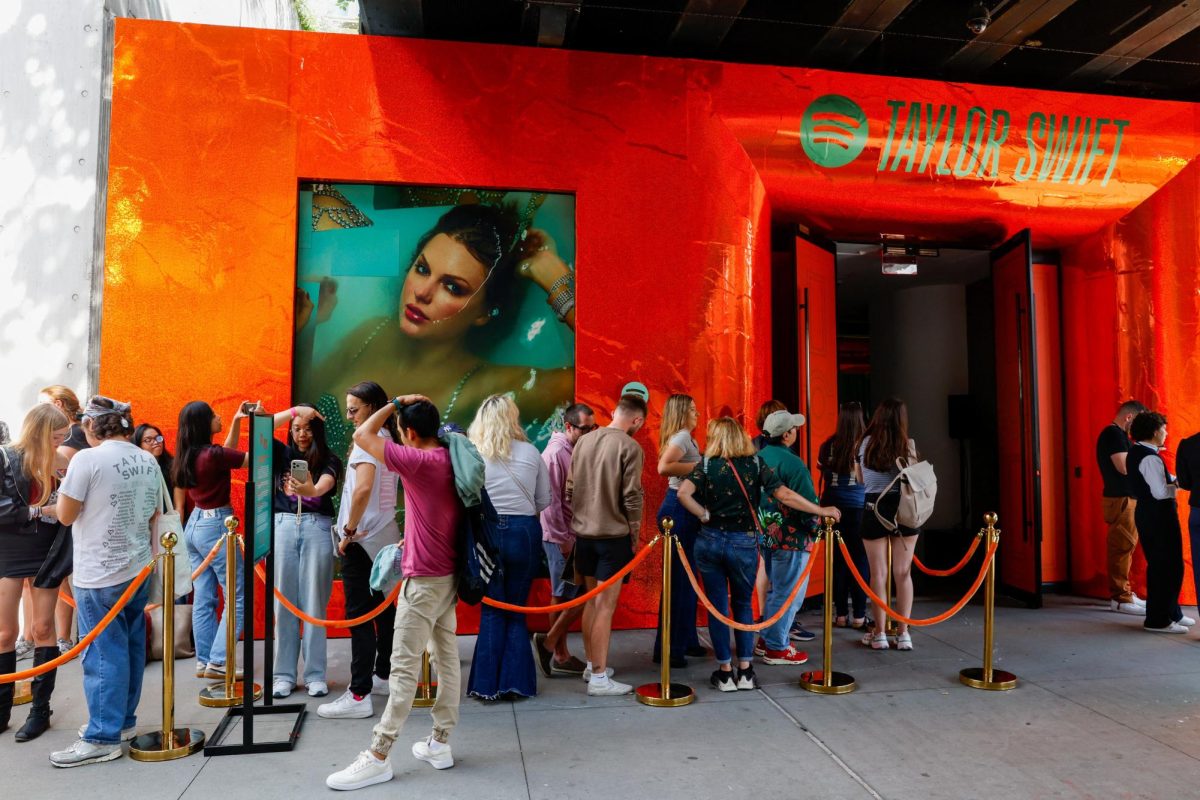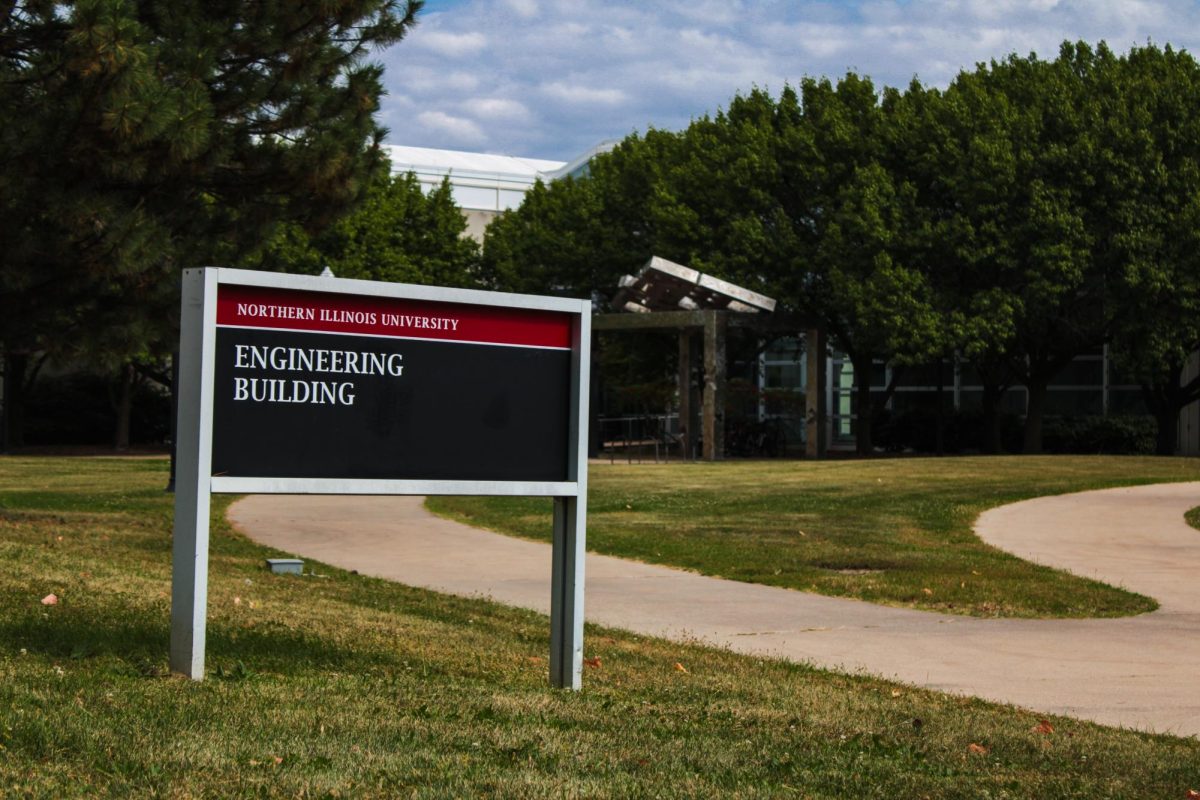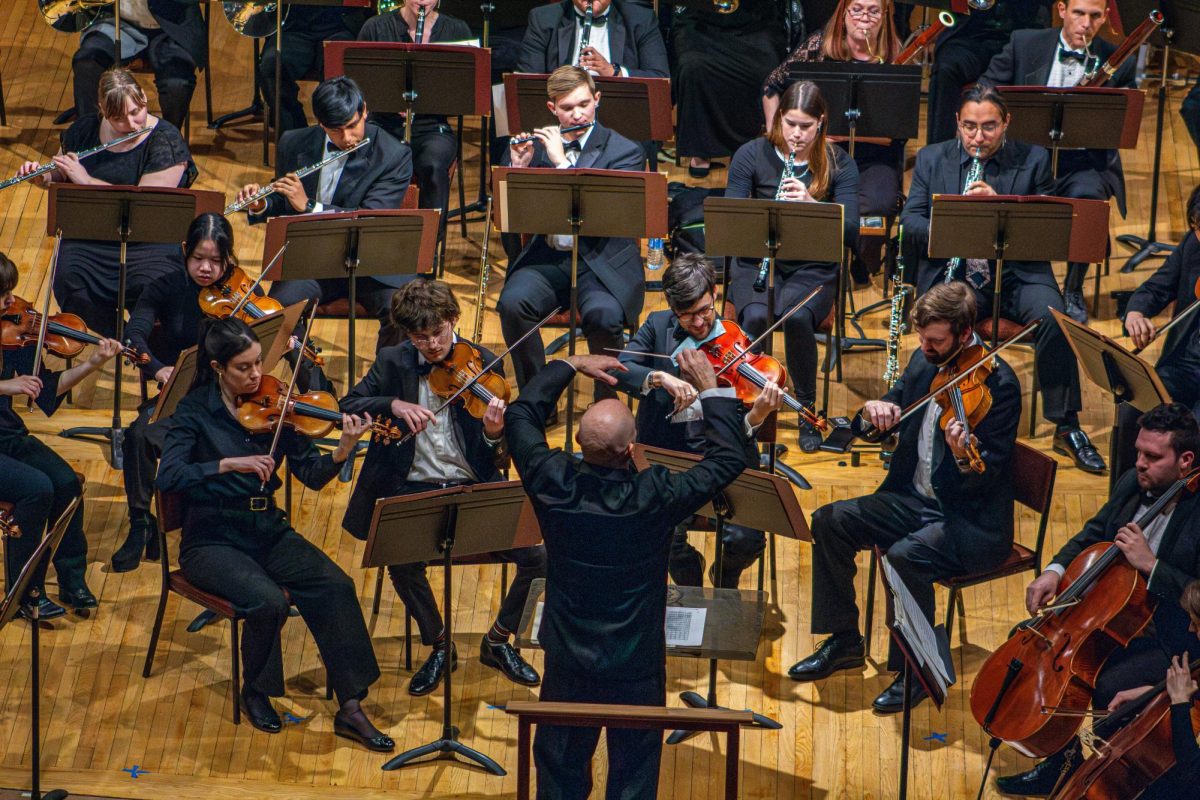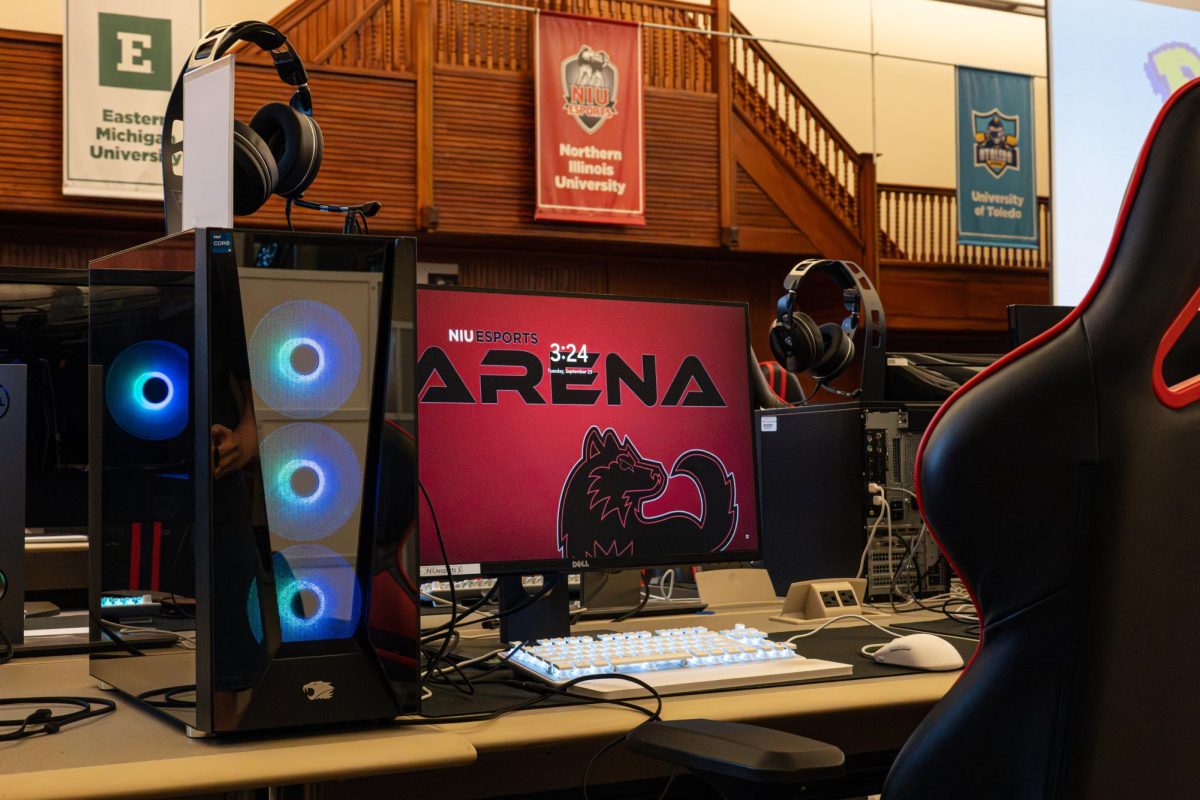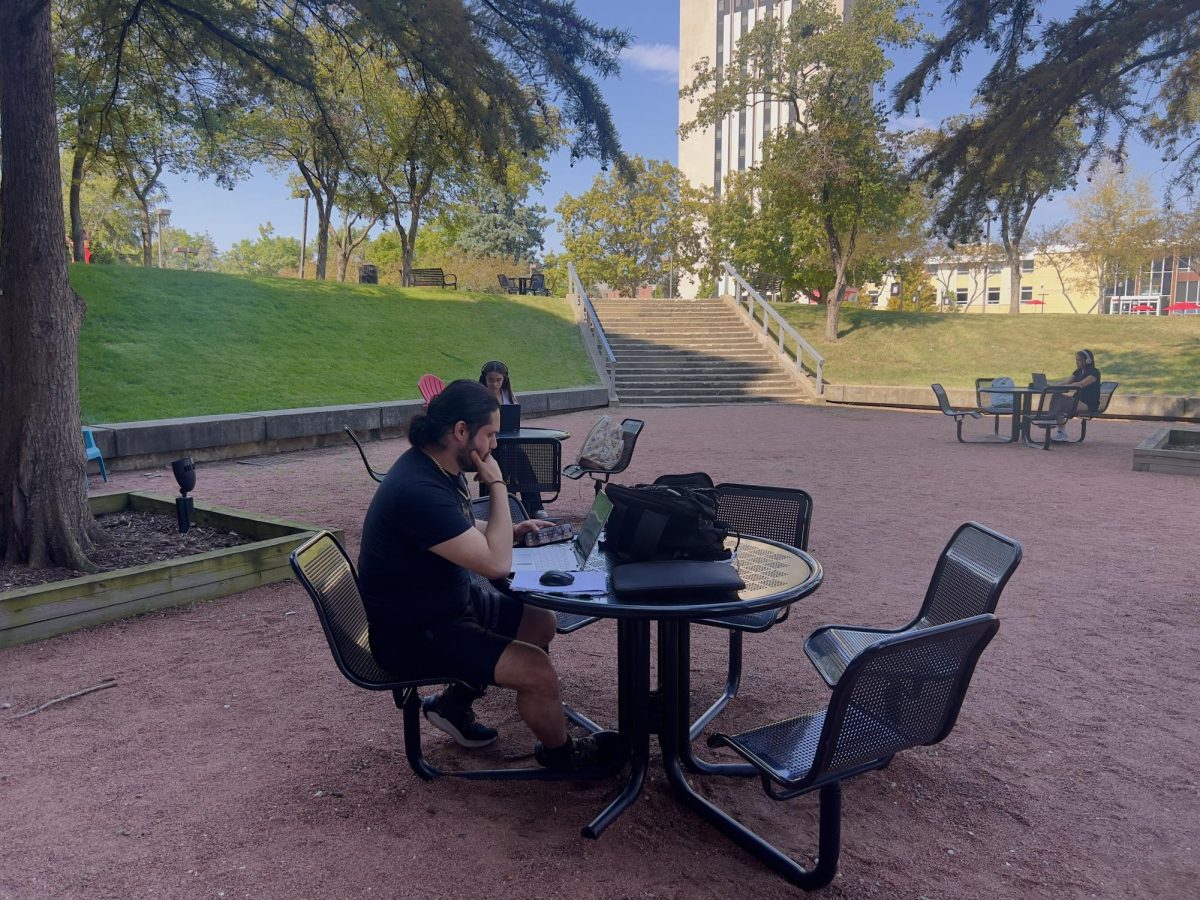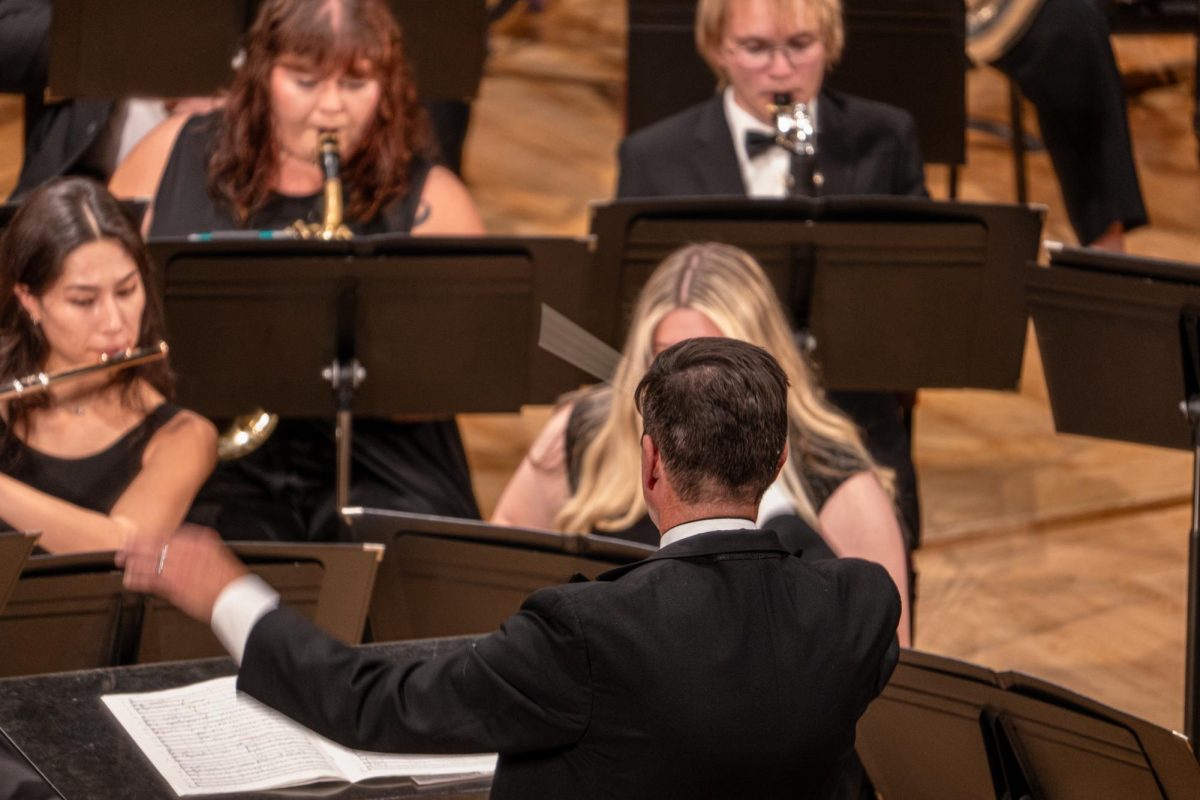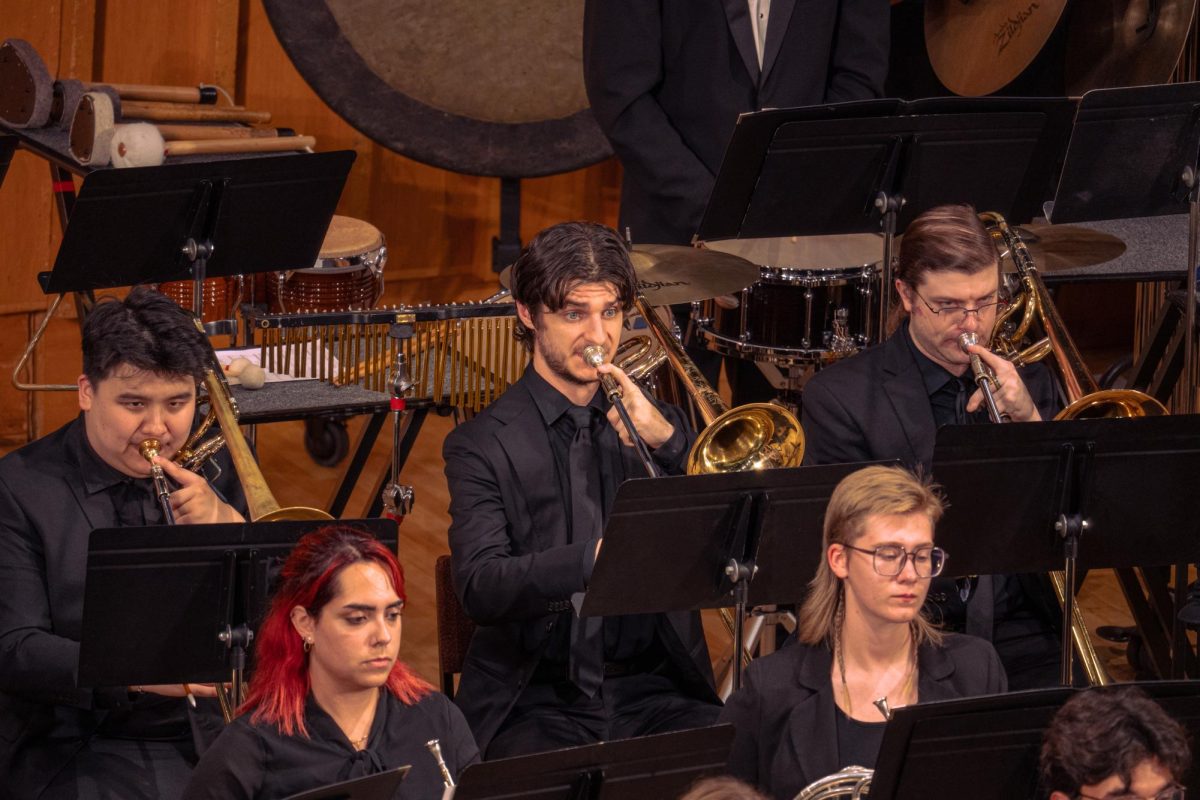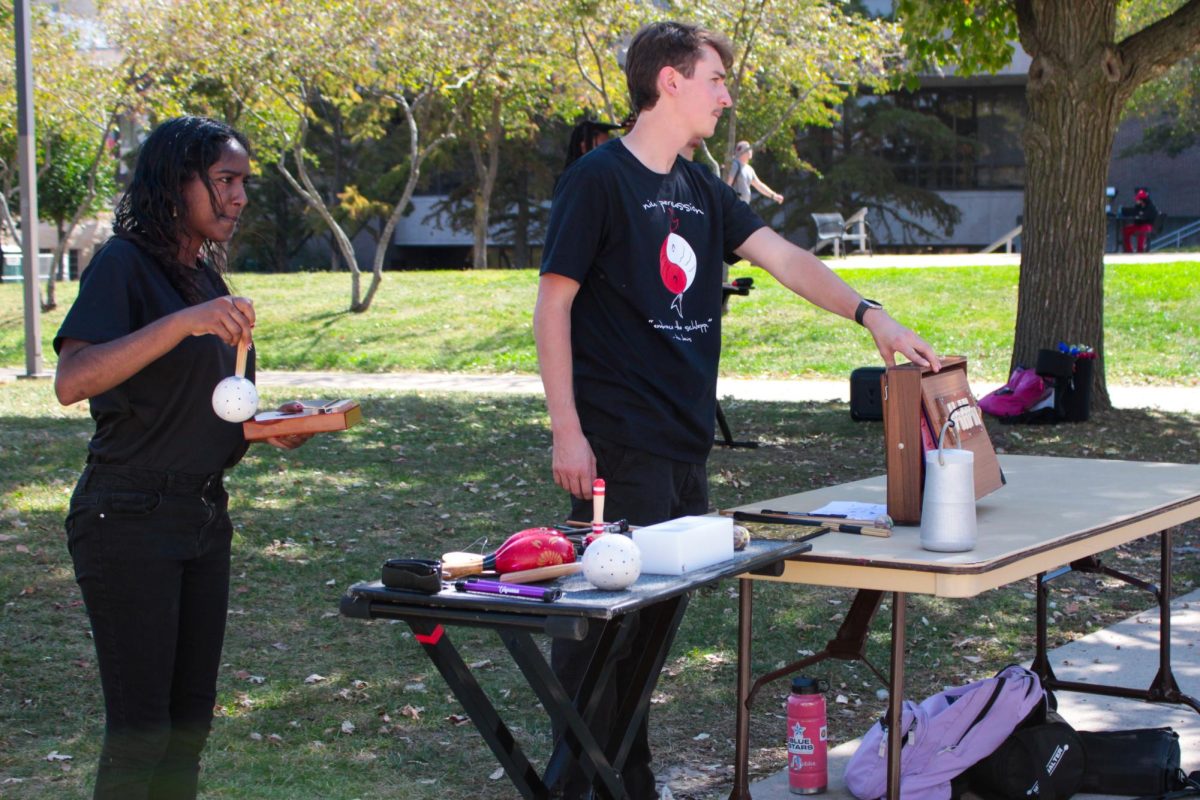“Imagine what the world would be like today if the groundbreaking scientific accomplishments of 1925 had never occurred.”
That prompt, posed by NIU Professor and STEM specialist Nestor Osorio, serves as the base of the new Founders Memorial Library exhibit, “100 Years of Quantum is Just the Beginning.” This display is connected to the United Nations, which has declared 2025 the International Year of Quantum Science and Technology.
The exhibit focuses on the foundational scientific accomplishments of 1925, specifically the papers submitted by Werner Heisenberg, and later by Max Born and Pascual Jordan. Osorio explained that while early ideas had been developed by scientists like Max Planck and Albert Einstein, the 1925 papers were crucial because they helped transform quantum mechanics into a more complete and usable theory.
The display is structured to be approachable for visitors with any knowledge of quantum mechanics. According to Osorio, the book display on the first floor showcases books ranging from those accessible to the general public to highly technical texts. All books are available for viewing and checking out. The book display, originally set for September, has been extended into October.
Two window exhibits on the second floor explore the humanistic and social impact of the field. One display addresses the question of why scientific research is important, emphasizing that scientific development doesn’t happen overnight.
“Science and technology are developed through one step after another. Each generation adds new knowledge and adds new theories,” Osorio said.
The other second-floor display highlights the often-overlooked contributions of women to quantum theory. The exhibit features multiple women who have made significant contributions to science, such as Marie Curie.
Osorio encouraged visitors to consider the challenging environment faced by women during that time period.
“Imagine in the 1920s, the 1930s, how difficult it would be for a woman to be a part of a scientific team,” he said.
Osorio understands that students outside of STEM may feel overwhelmed by the complexity of quantum mechanics. However, he encourages all students to visit.
“There are good books just written for the public that explain in simple ways how those theories have been developed and the impact they’ve had on our lives,” Osorio said.
The second-floor displays are expected to remain available for the rest of the year. If students have further questions about the material or the science, the library offers subject specialists who can provide further direction.
The exhibit is a powerful reminder that every flash of innovation, from the 1925 quantum papers to today’s technology, is not an accident, it’s a legacy.


